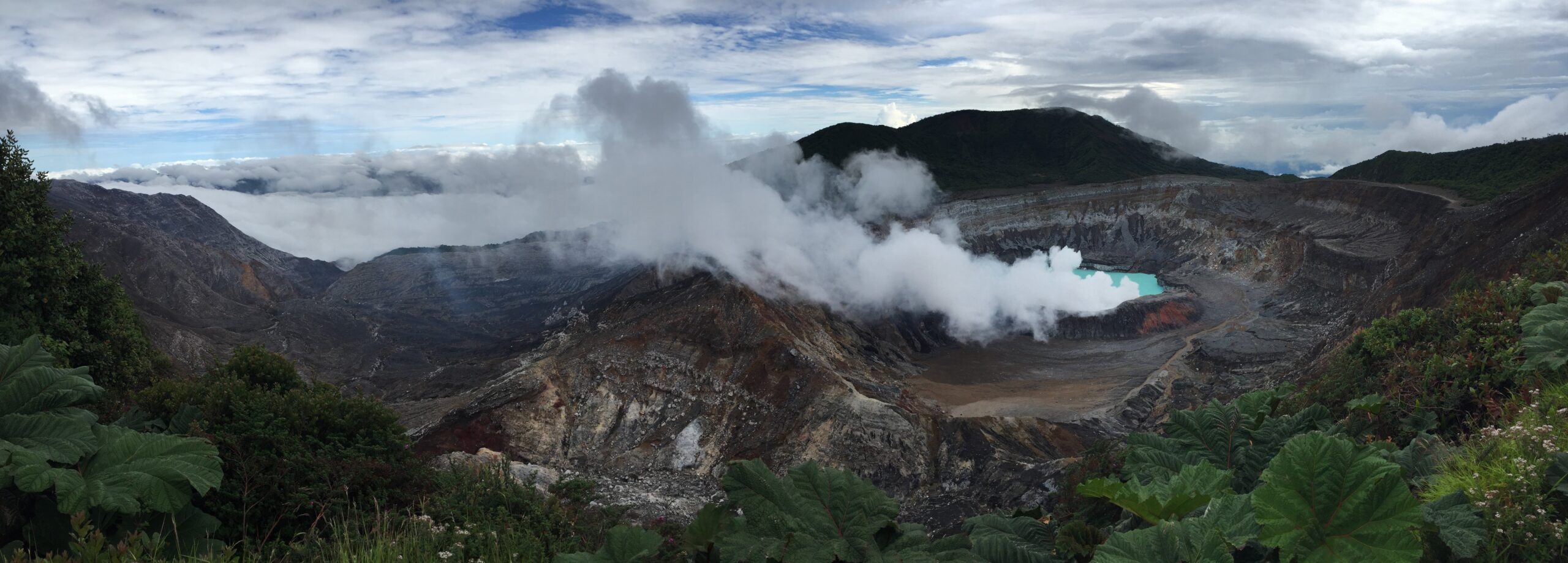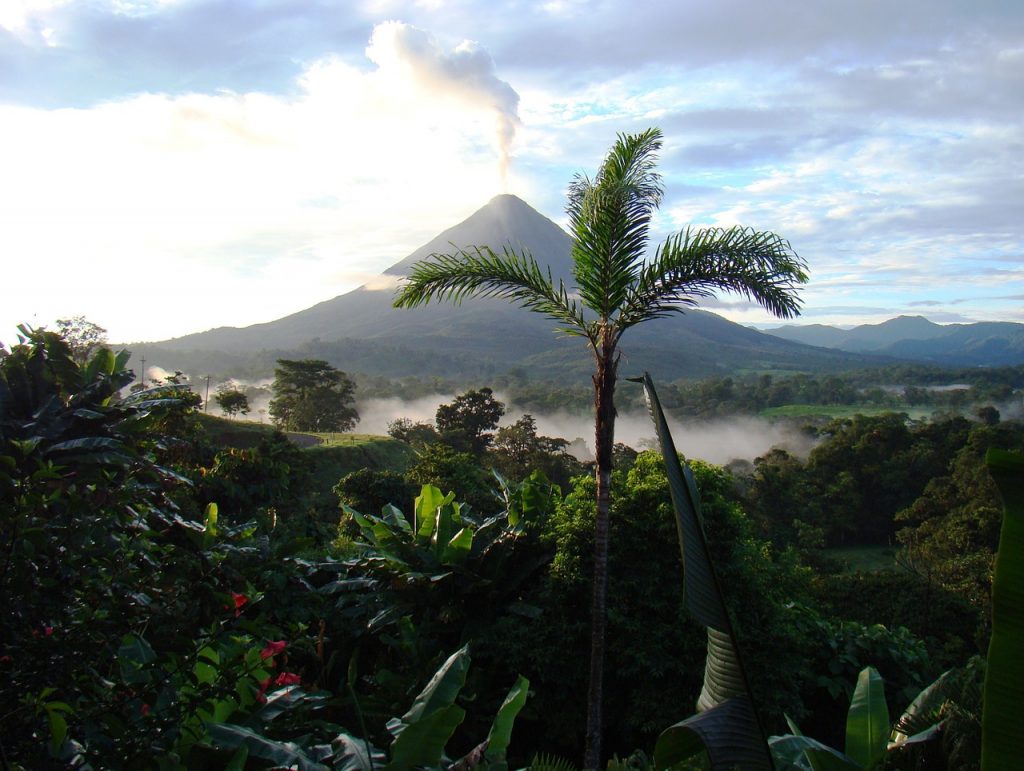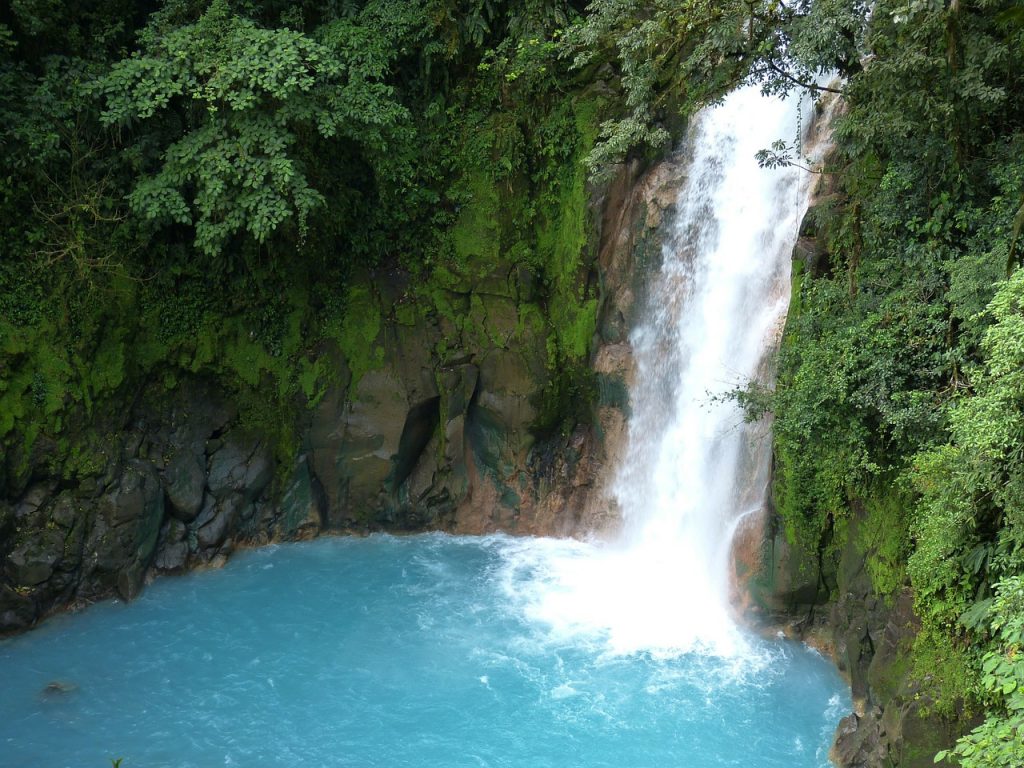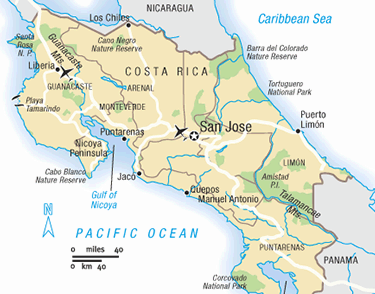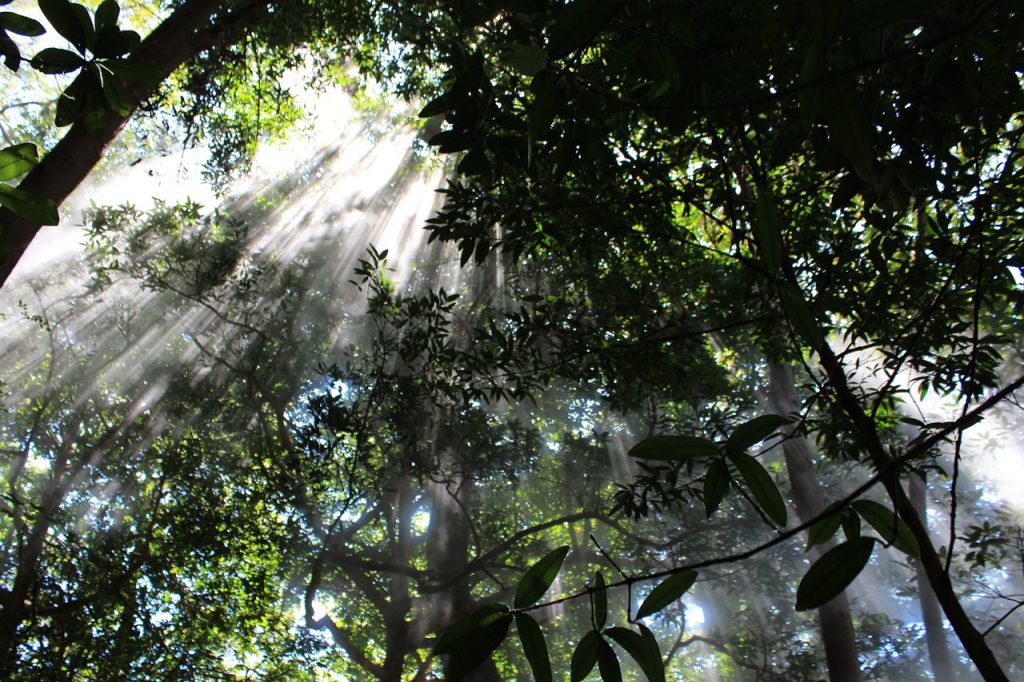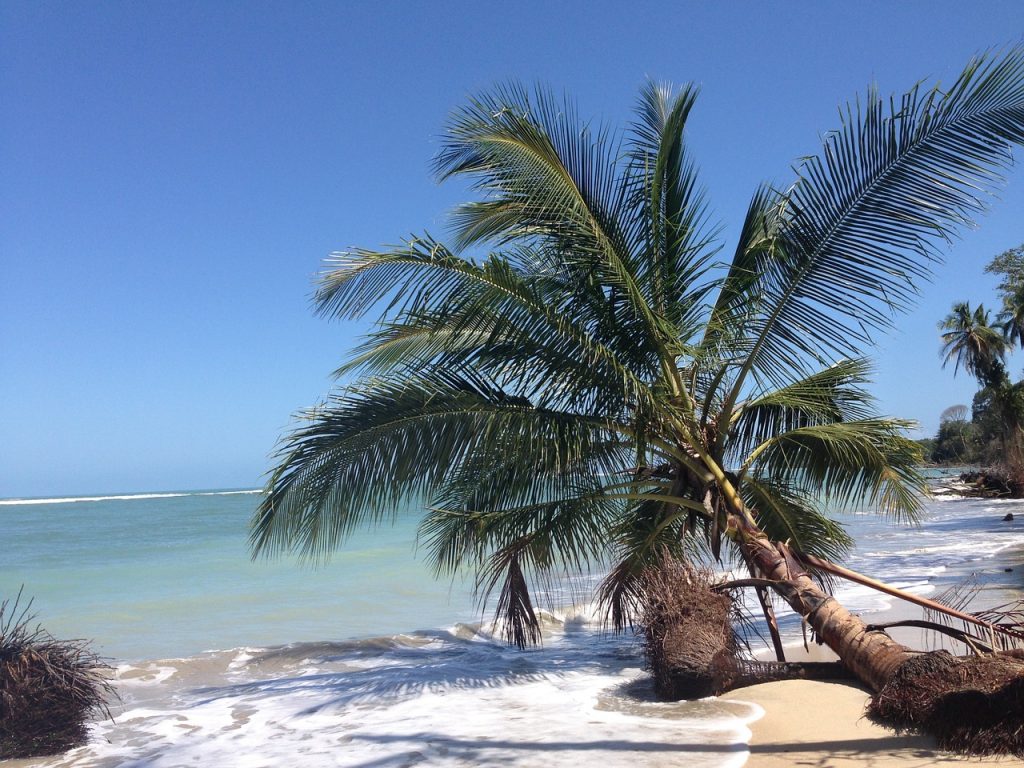Costa Rica
Costa Rica Overview
Costa Rica is an amazing destination that offers a varied travel experience. This small Central American country (a little larger than Vermont and New Hampshire together) offers a tremendous variety of landscapes including…
- Lush rainforests
- Mighty volcanoes
- Natural hot springs
- Tree lined beaches
- Two coasts
- Cities with colonial charm and vibrant nightlife
Costa Rica is a natural wonder with 20 natural parks and eight biological reserves with nature covering a quarter of the country and approximately 5% of the earth’s lifeforms thriving in a pristine environment. Nature lovers will find themselves surrounded by exotic birds, monkeys, butterflies, sea turtles, and tropical flora and fauna to name a fraction of the ecological beauty that is Costa Rica.
For adventure travelers Costa Rica offers a wealth of experiences seldom found in one destination like…
- Hiking a volcano or rain forest
- Swimming in a waterfall
- Ziplining through a cloud forest
- White water rafting
- Surfing the shimming blue ocean waters
- Kayaking
- Mountain biking
- Snorkeling
- Diving
- Hot air balooning
- Horseback riding
Accommodations in Costa Rica are as varied as the landscape itself and the country offers options for every type of traveler….
- Cozy mountain lodges
- Charming jungle hideaways
- Spacious villas
- Quaint inns
- Luxury resorts
- Golf resorts
- All-inclusive beach resorts
Best of all, Costa Rica is a very safe destination for travelers with a very stable democracy. The country has been twice nominated and once awarded the Nobel Peace Prize. It has no standing army, choosing to allocate the country’s resources to excellent educational and health care systems, social programs and economic development.
Anyone who has visited Costa Rica will tell you, however, that the best part of Costa Rica are it’s cultured, peaceful, friendly people with their “Tico” hospitality. Costa Ricans are warm, family loving, welcoming and gracious. They offer a rich culture of music, art, crafts and cuisine that embody the spirit of Pura Vida! (“pure life”) the greeting that sums up the seductiveness of this spectacular country.
Highlights of Costa Rica Regions
San José
- Costa Rica’s capital
- Primary business, cultural and social center
- Located close the country’s geographical center, in the heart of its Central Valley.
- Home to the country’s greatest collection of museums, fine restaurants and stores, galleries, and shopping centers.
The Central Valley
- Characterized by rolling green hills that rise to heights between 2,952-3,936 feet above sea level.
- Mild and springlike year-round.
- Primary agricultural region, mostly coffee farms
- Surrounded by high mountains, including four volcanic peaks.
- Poás and Irazú peaks are still active
- Tapantí, Juan Castro, and Braulio Carrillo are national parks
Guanacaste
- Northwestern corner of the country
- Home to Costa Rica’s most popular beaches (Playa del Coco, Playa Hermosa, Playa Flamingo, Playa Conchal, Tamarindo, and the Papagayo Peninsula)
- Liberia Airport is located here
- Home of long stretches of deserted sandy beaches as well.
- Driest region of the country.
- Offers semiactive volcanoes, lakes, and remnants of a tropical dry forest
Puntarenas & the Nicoya Peninsula
- South of Guanacaste
- Similar to Guanacaste, but more inaccessible and less crowded
- Home to Malpaís and Santa Teresa beach towns
- More humid with lush forests
- Nicoya peninsula forms the Golfo de Nicoya (Nicoya Gulf)
- Puntarenas,one of the main commercial ports in Costa Rica, is located here.
- Ferries connect the Nicoya peninsula to San José and mainland Costa Rica.
The Northern Zone
- Inland region to the north of San José
- Includes rainforests, cloud forests, hot springs, and the two most active volcanoes (Arenal and Rincón de la Vieja)
- Braulio Carrillo National Park and numerous remote lodges are located here
- Nature and active sports lovers favor this region.
- Lake Arenal offers the best windsurfing and kitesurfing in the world
- Offers mountain-biking trails
- Home to the Monteverde Cloud Forest
The Central Pacific Coast
- Most easily accessible coastline in Costa Rica
- Offers a wide variety of beach resorts and hotels
- Playa de Jacó beach, with its party vibe and great surfing, is an hour from San José and attracts visitors and Tico tourists alike.
- Manuel Antonio is built up around a popular coastal national park, offering beach time and panoramic views
- Home to Mount Chirripó the highest peak in Costa Rica
The Southern Zone
- Hot, humid region
- Costa Rica’s most remote and undeveloped area
- Home to dense rainforests, large national parks and rugged coastlines.
- Location of Corcovado, Piedras Blancas, and La Amistad national parks
- Offers nature lodges along the shores of the Golfo Dulce and the Osa Peninsula
The Caribbean Coast
- Hot, humid lowland with rivers, rainforests and banana plantations.
- Culture here is predominantly Caribbean with residents speaking English or Caribbean patois
- Northern section is accessible only by boat or small plane
- Home of Tortuguero National Park, known for its nesting sea turtles
- The towns of Cahuita, Puerto Viejo, and Manzanillo are located in the southern half
- This area can be rainy, especially between December and April.
Important Costa Rica Travel Information
Climate/Clothing: 
Costa Rica has a year round spring-like climate, but there is considerable regional variation in rainfall and temperature. Coastal regions are hot and humid and average between the mid 70’s to low 90’s. Lightweight clothing and sunscreen are recommended. San José and the Central Valley temperatures range between the low 60’s to the low 70’s, but are cooler in the mountain regions. Long pants and a light sweater or jacket may come in handy in the evenings. Rainy or “Green Season,” is from May to November, with mornings typically sunny. Rain ponchos are recommended. Rains decrease in July through the beginning of August.
Currency: 
The official currency of Costa Rica is the colon, but U.S. dollars are widely accepted. U.S. dollars and travelers checks can be exchanged in banks and in most hotels. It is illegal to exchange money anywhere else. Major credit cards and traveler’s checks are accepted throughout the country. ATMs are becoming more widely available in the major tourist areas. Most independent guides will require cash for tours you arrange yourself locally.
Electricity: 
The standard in Costa Rica is the same as in the United States: 110 volts AC (60 cycles).
Entry Requirements: 
U.S. citizens need a passport, valid for at least six months past your return home and a round trip or continuing ticket. A three month tourist visa is issued to U.S. citizens after clearing Costa Rica customs. Non U.S. citizens, please check passport and visa requirements for your country directly with the Costa Rica Consulate.
Children Traveling:
Children under 18 years old, traveling without both parents or legal guardians, should have a notarized letter of authorization signed by the missing parent(s) or guardian(s). A notarized birth certificate showing only one parent, a parent’s death certificate, or a court order of child custody may also be permissible. Failure to supply documentation could result in the airlines denying boarding due to international child protection laws.
Immunizations: 
No vaccinations are required for travel to Costa Rica and most communicable diseases have been eradicated. Consult your doctor and for the latest health information visit the Centers for Disease Control’s web site at www.cdc.gov
Insects: 
Bothersome insects are generally not considered to be any more of a problem in Costa Rica than they are in the U.S. and Canada. Common sense precautions are recommended when visiting rain forests, high altitudes, beaches or for evening walks. Insect repellent is recommended.
Language: 
The official language is Spanish, though many Costa Ricans speak English.
Medical Facilities: 
Reliable doctors, clinics, hospitals and pharmacies are available, but can be limited outside of cities and towns. Cash payment is expected for health services. Travel insurance, including medical evacuation, is highly recommended.
Public Holidays: 
Public offices, banks, most businesses and shops will be closed on Jan. 1 – New Year’s Day, March/April – Easter Week, April 11 – Juan Santamaria Day, May 1 – Labor Day, July 25 – Guanacaste Day, Aug. 15 – Mother’s Day, Sept. 15 – Independence Day, Nov. 2 – All Soul’s Day, Dec. 25 – Christmas Day.
Time Zone: 
Costa Rica is on Central Standard Time and Daylight Saving Time is not observed.
If you are ready to begin planning a family vacation in Costa Rica, a Costa Rica destination wedding , an eco-adventure or a relaxing beach getaway, our Costa Rica travel specialists at Dreams and Destinations are available to help you create your own Pura Vida! experience.
Photos courtesy of Leslie Sickler and Pixaby

